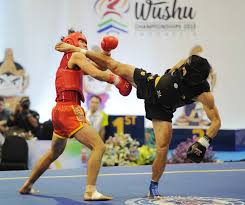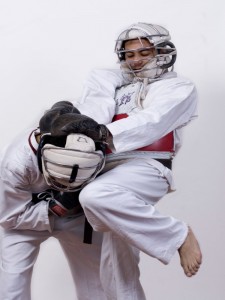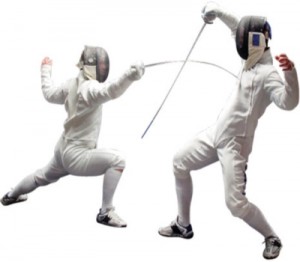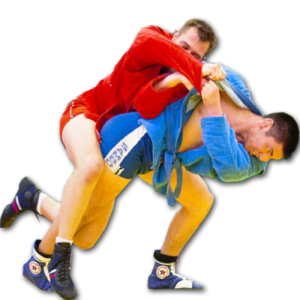Hapkido
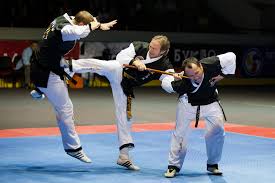 Hapkido is a Korean martial arts similar to Japanese aikido, because the appearance of this martial art was greatly influenced by the technique underlying aikido, Aiki-jujutsu. Also it included elements of tansudo, taekwondo.
Hapkido is a Korean martial arts similar to Japanese aikido, because the appearance of this martial art was greatly influenced by the technique underlying aikido, Aiki-jujutsu. Also it included elements of tansudo, taekwondo.
Martial Arts Description
In Hapkido, both defense techniques against attackers, be it one or more opponents, and enemy attack techniques are developed. The energy that the enemy gives into the attack does not stop, but simply redirects in the direction necessary for the fighter, followed by a counterattack.
In addition to equipment without the use of weapons, in hapkido there are also armed equipment using a knife, a sword, a short stick, a pole, and sticks as the main weapons. In addition to basic weapons, all schools use their own characteristic types of weapons.
Hapkido is based on techniques for controlling energy – one’s own and one’s enemy. This management is carried out through the principle of hapki, which is the Korean version of the Japanese aiki. However, the methods of training in Hapkido differ from similar Japanese martial arts.
The breathing and meditation techniques vary in technique and in their role in the training process. So, the KHF style did not initially use meditation – it was believed that such practices were closer to spiritual people, Buddhist monks. However, late KHF is already developing using meditation practices. KHF Hapkido uses the ancient techniques of Taoist monks in training. The philosophy of the Hapkido technique is Yu-Won-Hwa (water-circle-harmony). According to this theory, the entire combat technique should be carried out in a uniform continuous movement, techniques should be performed in a circle with different amplitudes, the technique should be applied expediently with a specific case.
Self-defense drawing in Hapkido The founder of the Hapkido is the master Choi Yong Sol. For a long time he was one of the best students of master Daito Ryu Takeda Sokaku in Japan. Upon the return of Master Choi to Korea, he began teaching the studied style under the name Yawara, later renaming it Yu-Sul, and even later Kido. The creation of hapkido in the form that has reached our time was carried out by the students of the master. They added various new techniques to the hapkido: Korean kicking techniques, working with various weapons, etc. The name Hapkido was also proposed by a student of Choi, known as Ji Han Jae. Well-known Korean martial arts historian Dr. Kim Hee Young said about the spread of martial arts: “Master Choi lit a match, and Master Ji Han Jae lit a whole bonfire with this match.” Nowadays, master Ji Han Jae is the head of the Hapkido style he created – Sinmu Hapkido. Myon Jae Nam, the creator of a new technique, hankido, also brought a lot to the hapkido.
The Korean Hapkido Federation KHF is the first and largest Korean Hapkido Federation. Masters of this style disseminate and use a rigid style, preserve all existing traditions of Korean martial arts.
The second large organization is the International Hapkido Federation IHF, which is the most famous of the practitioners of the soft direction of Hapkido. Soft technique is outwardly indistinguishable from traditional Aikido. But the inner content of Hapkido contains many Korean traditions.
Also widely known is the Global Hapkido Federation – GHF, which is common in many countries around the world.
Hapkido Levels Hapkido levels are divided according to the skills of the students. Levels for students are called kyp; for masters, degrees are called dan. The number of qip and the colors of the belts vary in a number of Hapkido schools. The degrees of masters begin with 1 dan and end with 10 dan, which is given to the founder of the style. In some schools, 9 dan is considered the highest degree of mastery.
Hapkido Styles and Federations
Hapkido is usually divided into two styles – hard and soft. Their founders are students of the master Choi Yong Sol – Ji Han Jae and Myung Jae Nam.
Today, there are a large number of hard hapkido organizations. Sinmu Hapkido was based on the techniques of Ji Han Jae, which he taught while living in Korea. In addition, they added a special teaching methodology, taken from the Taoist monks.
According to Grandmaster Chi, energy education technicians need to be given no less time than applied technicians. Even the name of the Shin Mu style consists of parts that, when combined, can be translated as “The Higher Art of Combat of the Path of United Energy”.
The style of soft Hapkido developed by Grandmaster Myung Jae Nam is now used by many Korean Hapkido federations. Soft hapkido is distinguished by a large number of movements in a circle and mandatory practice with ki energy. At the heart of the style there are 12 main movements, representing 12 hapkido techniques. These techniques can be performed separately, and gradually performing one by one. At the same time, breaking the reception means the same as disrupting the flow of ki energy.
Pro-Japanese name – Hapkido Unlike the pro-Japanese name – Hapkido, GM Myung came up with a new name for his style – Hangido (in Korea) or Hankido (in Europe and America).
